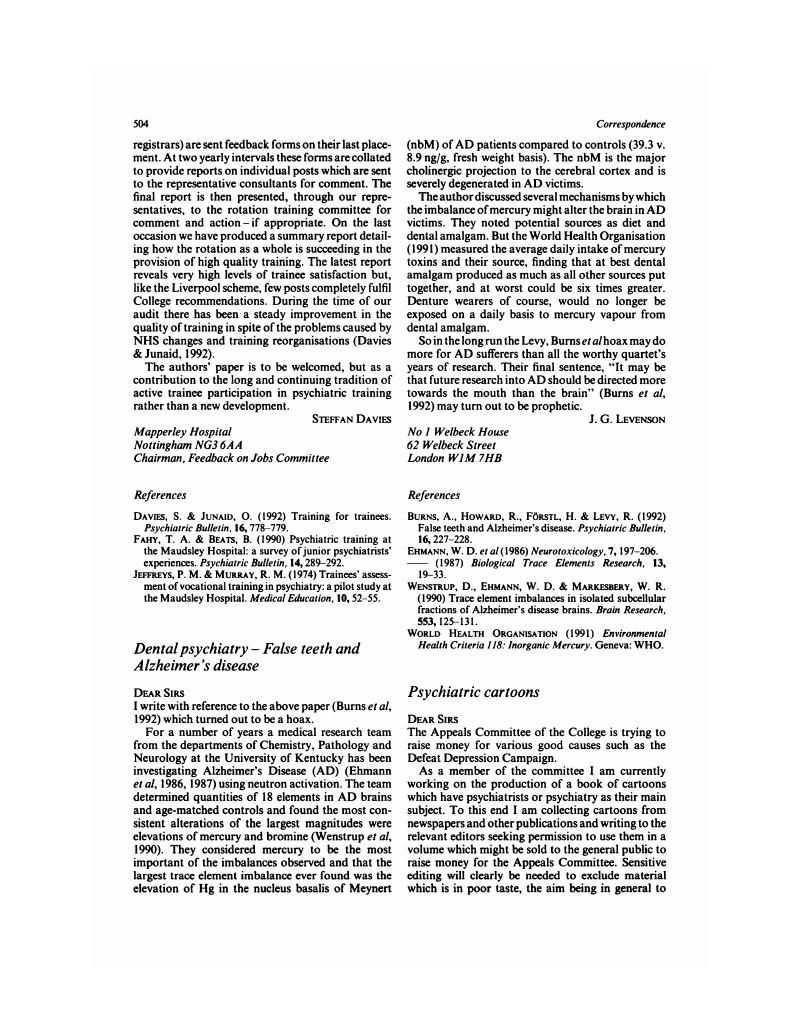No CrossRef data available.
Article contents
Dental psychiatry – False teeth and Alzheimer's disease
Published online by Cambridge University Press: 02 January 2018
Abstract
An abstract is not available for this content so a preview has been provided. As you have access to this content, a full PDF is available via the ‘Save PDF’ action button.

- Type
- Correspondence
- Information
- Creative Commons
- This is an Open Access article, distributed under the terms of the Creative Commons Attribution (CC-BY) license (http://creativecommons.org/licenses/by/4.0/), which permits unrestricted re-use, distribution, and reproduction in any medium, provided the original work is properly cited.
- Copyright
- Copyright © Royal College of Psychiatrists 1993
References
Burns, A., Howard, R., Förstl, H. & Levy, R. (1992) False teeth and Alzheimer's disease. Psychiatric Bulletin, 16, 227–228.Google Scholar
Wenstrup, D., Ehmann, W. D. & Markesbery, W. R. (1990) Trace element imbalances in isolated subcellular fractions of Alzheimer's disease brains. Brain Research, 553, 125–131.Google Scholar
World Health Organisation (1991) Environmental Health Criteria 118: Inorganic Mercury.
Geneva: WHO.Google Scholar



eLetters
No eLetters have been published for this article.